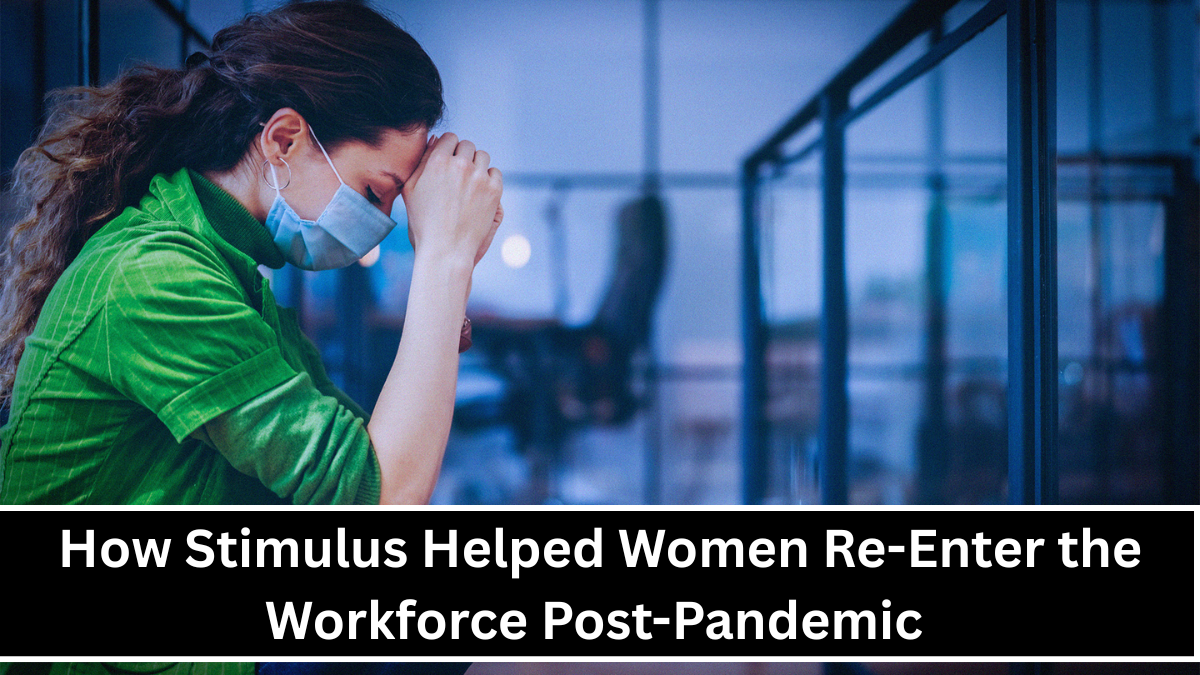The COVID-19 pandemic disrupted lives all over the world, but women faced a unique set of challenges. Many had to leave their jobs to care for children or sick family members. Others worked in industries like retail, hospitality, and education that were hit the hardest. As a result, millions of women were forced out of the workforce. But as the world began to recover, government stimulus programs played a major role in helping women get back to work. These programs provided financial help, child care support, training, and other resources. Let’s explore how these efforts gave women a second chance to rebuild their careers after the pandemic.
Policy Focus: Stimulus Packages and Workforce Recovery for Women
When the U.S. government passed the American Rescue Plan in 2021, it included more than just stimulus checks. It provided direct support to families, extended unemployment benefits, boosted child tax credits, and gave funds to schools and child care centers. These changes had a huge impact on women, especially mothers, who had left the workforce. One major challenge during the pandemic was that many child care centers closed, making it hard for women to work. The stimulus provided $39 billion in child care relief, helping centers stay open and making care more affordable. This allowed many mothers to return to work or search for jobs again.
Another key part of the plan was job training and workforce development programs. These programs gave women a chance to learn new skills, switch industries, or move to higher-paying jobs—especially important for those whose previous work had disappeared. The expansion of the Child Tax Credit gave monthly payments to families, reducing financial pressure. For many women, this meant they could afford transportation, child care, or time to attend job interviews and classes. It helped turn survival into stability—and from there, many women could focus on rejoining the workforce.
The road back to work wasn’t easy for millions of women after the pandemic, but the U.S. stimulus programs offered a much-needed lifeline. By supporting child care, expanding tax credits, offering training, and giving direct financial aid, these efforts helped women take the first steps back into employment. While challenges still exist—such as pay gaps and job flexibility—the progress made so far shows how thoughtful policy can create real change. A strong economy depends on everyone having the chance to participate, and helping women return to work was not just the right thing to do—it was essential for rebuilding the nation’s future.
FAQ’s:
Q1. Why did so many women leave the workforce during the pandemic?
A1. Many women left their jobs due to school closures, lack of child care, and health concerns. Others lost their jobs in industries heavily impacted by COVID-19.
Q2. How did stimulus checks help women re-enter the workforce?
A2. Stimulus checks gave women short-term financial support to cover essential needs, reduce stress, and give them time to look for work or upskill.
Q3. What was the role of child care funding in women’s return to work?
A3. The stimulus gave billions to child care centers, helping them stay open and reduce costs for families. This allowed mothers to return to jobs more easily.
Q4. Were there programs for women to change careers or learn new skills?
A4. Yes, the stimulus included money for job training and education programs. These helped women move into stable careers in healthcare, tech, and more.
Q5. Did all women benefit equally from these programs?
A5. Not always. While many women were helped, some still faced barriers like language, lack of internet, or living in areas with fewer resources. But overall, the stimulus made a big difference for many families.
